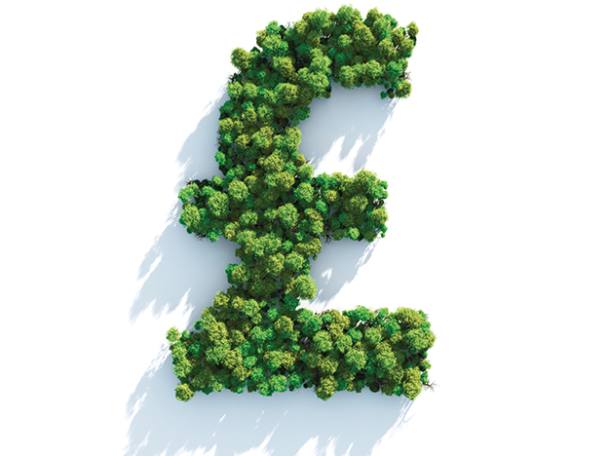- There are many deficiencies with how companies and funds report climate impact
- Fortunately, the landscape is improving and evolving quickly
As anyone who has taken on the challenge will know, working out how climate-friendly your investment portfolio may be is no mean feat. The metrics vary widely, as do interpretations of reporting criteria, and there is currently little independent adjudication of emissions disclosures.
That said, the landscape is evolving quickly, with new regulations in the pipeline to enforce greater transparency on the climate impact of both companies and funds. Some disclosures are already mandatory: since 2013 all quoted UK companies have had to report their greenhouse gas emissions as part of their directors’ annual report.
Since 1 April 2019, quoted companies have had to report on their global energy use and large businesses must disclose their UK annual energy use and greenhouse gas emissions. The government encourages all other companies to report similarly, although this remains voluntary and reporting standards vary.
“It may seem like an alphabetti spaghetti of standards and regulations at the moment, but there is lots to be positive about within the sustainable investing asset management industry,” says Joshua Cole, fund manager at Green Investment Partners. “We are just in a transition phase and governments, investors and managers are finding their feet. Change is happening quickly, and improvements are being made on a frequent basis.”
Company climate reporting
Current climate reporting rules, as laid out in Streamlined Energy and Carbon Reporting (SECR) legislation introduced in 2019, mean UK-listed companies must report annual global greenhouse gas emissions from their business activities, known as Scope 1 emissions, under the global Greenhouse Gas Protocol. Companies must also report Scope 2 emissions, or those from their energy consumption (for example, purchased electricity, heat steam and cooling). The Greenhouse Gas Protocol covers the accounting and reporting of seven greenhouse gases, the most significant being carbon dioxide and the second most prevalent, methane.
Scope 3 emissions, which result from a company's actions, such as those relating to supply chains, are disclosed on a voluntary basis. These emissions can be difficult for a company to quantify, but many large companies have done so. Scope 3 emissions are important because for many large companies these are the largest part of their carbon footprint. Unilever (ULVR), for example, estimates that its Scope 3 emissions make up 98 per cent of the total, down to the sourcing and production of raw materials.
“The conundrum is that the largest part of the carbon footprint is the hardest to control," says Rob Morgan, chief analyst at Charles Stanley. "Disclosure tends to be on company websites or [made via] specific reporting. Calculating Scope 3 is complex as suppliers tend to feed multiple organisations.”
Upcoming regulatory changes
More extensive mandatory climate reporting for UK public companies is on its way. From 6 April 2022, more than 1,300 of the largest UK-registered companies and financial institutions will have to disclose climate-related financial information in line with recommendations from the Task Force on Climate-Related Financial Disclosures (TCFD). The TCFD framework is structured around four key principles of financial disclosure:
- Governance: the organisation’s governance around climate-related risks and opportunities.
- Strategy: the actual and potential impacts of climate-related risks and opportunities on the organisation’s businesses, strategy and financial planning.
- Risk management: the processes used by the organisation to identify, assess and manage climate-related risks.
- Metrics and targets: the metrics and targets used to assess and manage relevant climate-related risks and opportunities.
One of the task force’s key recommended disclosures relates to the resilience of an organisation’s strategy, taking into consideration different climate-related scenarios, including a 2° Celsius or lower scenario. Companies are encouraged to disclose how their strategies might change to address potential climate-related risks and opportunities, which is a key step to better understanding the potential implications of climate change on the organisation.
“We can expect further iterations of TCFD with progressively smaller companies falling under the requirements in due course,” Morgan says.
Hortense Bioy, director of sustainable research at Morningstar, says the US Securities and Exchange Commission is considering a new climate risk disclosure rule, which may be inspired by the TCFD. Meanwhile, in the European Union (EU), which is the most developed major region in terms of climate reporting, there is the Non-Financial Reporting Directive (NFRD) aimed at listed companies across the EU.
And France and New Zealand have introduced TCFD reporting on a comply-or-explain basis.
Fund climate reporting
Comparing the climate impact of funds is difficult, as there isn’t yet a standard reporting framework. In the absence of such measurements, the two easiest (and free) tools available to investors are Morningstar and MSCI, which have information on thousands of funds, says Gina Miller, campaigner and co-founder of SCM Direct.
Morningstar has a ‘sustainability’ tab for most funds in which it displays various environmental, social and governance (ESG) “pillars”, one of which is an environmental score. MSCI has an ESG fund tool which is more detailed and displays the weighted average carbon intensity of the fund holdings and records how many of the fund’s holdings are green vs fossil-fuel-based.
However, much of the underlying data and methods of calculation can be subjective, Miller cautions. There are also questions over the quality of such data and the extent to which companies deliberately understate things. “I am afraid that however positive the scoring system appears, if it is based on dubious inputs, it’s essentially worthless and investors should conduct further due diligence,” she says.
Funds domiciled within the EU are classified as falling under one of three articles following the implementation of the Sustainable Finance Disclosure Regulation (SFDR) earlier this year:
- Article 6 – funds with no sustainable lens
- Article 8 – funds that have social and environmental characteristics
- Article 9 – funds that have a sustainable investment objective.
Following Brexit, the UK chose to diverge from EU regulations, but the Financial Conduct Authority (FCA) proposed to create five new categories for ESG funds in a discussion paper published in November. It plans to build on TCFD-aligned disclosure requirements, widening the scope beyond climate to other sustainability factors. The paper sets out a potential framework for fund reporting with five categories:
- Not promoted as sustainable
- Responsible (may have some sustainable investments)
- Sustainable – transitioning (sustainable characteristics or objectives but low allocation to taxonomy-aligned sustainable activities)
- Sustainable – aligned (high allocation to taxonomy-aligned sustainable activities)
- Sustainable – impact (objective of delivering positive environmental or social impact).
The FCA is asking for comments on the proposals by 7 January 2022.
How to detect greenwashing
Miller says there are three very practical steps you can take to detect greenwashing. The starting point is asking how different the performance of a green fund is to an equivalent non-green fund. “If the two are practically identical it suggests that whatever filters or omitted stocks or sectors are being used by the fund manager make little difference in practice,” she says.
The next question is whether rating agencies Morningstar and MSCI show much difference between the ESG scores of the green fund and the non-green fund. The third step is to analyse the fund’s documents and holdings to check if its aims, objectives and filters are implemented to the standard you would expect.
Looking under the hood at the fund’s holdings and making your own assessment of ESG characteristics is crucial. Many funds with a climate theme don’t invest only in green companies. They may invest in so-called 'transition' companies. These companies don’t necessarily have good green credentials today but plan to improve their environmental profile.
“When we assess the level of ESG incorporation of a strategy, we try to understand the manager’s philosophy, the ESG objective and intentionality of the strategy, how ESG data is used, and what ESG approaches are used," says Bioy. "We also analyse the portfolio to check that the holdings are in line with expectations."
Morgan adds that Charles Stanley assesses proxy voting data and controversial products involvement, and has been developing quantitative metrics to assess a fund’s positive impact.
Climate-friendly funds
For investors looking for funds with a specific climate mandate, there are plenty of options, with varying degrees of climate impact. Morningstar, helpfully, has subdivided its climate-aware funds into five distinct categories.
- Low-carbon funds – seeking to invest in companies with reduced carbon intensity and/or carbon footprint relative to a benchmark index.
- Climate-conscious funds – selecting or tilting towards companies that consider climate change in their business strategy and are prepared for the transition to a low-carbon economy.
- Climate solutions funds – only targeting companies that are contributing to the transition to a low-carbon economy through their products and services and that will benefit from this transition. These funds are less well diversified and tilted towards industry and technology.
- Clean energy/tech funds – investing in companies that contribute to or facilitate the clean energy transition. These funds are concentrated in industry and technology sectors.
- Green bond funds – investing in debt instruments that finance projects facilitating the transition to a green economy.
Similarly, MSCI has a range of climate-conscious indices which are followed by many exchange traded funds. ESG-screened indices offer a light-touch approach by excluding the world’s worst polluters, while MSCI Low Carbon and MSCI Global Fossil Fuels Exclusion indices have a more targeted mandate.
Most of the new climate-friendly exchange traded funds (ETFs) are listed in the US, but there are plenty of options for UK investors. iShares MSCI World ESG Screened UCITS ETF (SAWD) offers a light-touch approach, while iClima Global Decarbonisation Enablers UCITS ETF (CLMP), which listed in London earlier this year, tracks an index designed to measure the performance of securities from five sub-sectors. These include green energy, green transportation, water and waste improvements, decarbonisation-enabling solutions and sustainable products.
iShares Global Clean Energy UCITS ETF (INRG), meanwhile, has been a popular choice among investors wanting to back the energy transition. It had over £4.6bn in assets at the end of November and is also classed as an Article 9 fund (these are funds that specifically have sustainable goals as their objective). The ETF invests in companies involved in clean energy production or the provision of clean energy equipment and technology in both developed and emerging markets. It tracks the S&P Global Clean Energy Index.
While this ETF boomed last year, delivering a 120 per cent return in 2020, it is down more than 15 per cent over the year to 7 December, according to FactSet. The index it tracks has been adjusted after the fund and its non-Ucits equivalent saw huge inflows last year, making it a large owner of certain holdings further down the market-cap spectrum.
For an environmentally-minded investment trust that invests in equities, Impax Environmental Markets (IEM) is a popular option. The trust’s managers, Jon Forster, Bruce Jenkyn-Jones and Fotis Chatzimichalakis, invest in small- and mid-cap companies that make at least half of their revenue from products or services in the energy efficiency, renewable energy, water, waste and sustainable food and agriculture markets.
Jason Hollands, managing director at Tilney Smith & Williamson, suggests FP WHEB Sustainability (GB00B8HPRW47), the sole strategy managed by boutique manager WHEB Asset Management. It invests globally across nine themes: environmental services, resource efficiency, water management, sustainable transport, cleaner energy, safety, health, well-being and education. “WHEB is very transparent,” Hollands says. “[It publishes] all [its] holdings, [its] voting and engagement track records and the minutes of [its] investment advisory meetings.” It also provides impact reports.
Hollands says Brown Advisory US Sustainable Growth (IE00BF1T6X55) is his top pick for investors wanting exposure to US stocks with a sustainable footprint. The fund excludes companies that defy the United Nations’ 10 Global Compact Principles, three of which are environmentally focused. The fund avoids companies that own fossil fuel reserves or generate power from fossil fuels.
Other fund managers with a good reputation for ESG include Royal London, Montanaro and Liontrust, all of which have dedicated sustainability or ‘better world’ funds. However, understanding the true climate impact of a portfolio is complex and you might have to do the legwork and make a judgement yourself.
Things to be aware of
As climate reporting expands to include Scope 3 and even Scope 4 (avoided greenhouse gas emissions), the risk of double counting emissions becomes significant, especially for a portfolio, according to a report by investment manager Green Investment Partners. Emissions data is also largely self-reported by companies, with few checks carried out on the accuracy.
The report highlights that many ESG products and ratings only focus on Scope 1 and Scope 2 emissions, which cultivates a bias towards the companies that report and looks favourably on larger, less capital-intensive companies such as software businesses. It is important to be aware that a mid-sized company reporting little ESG data might get a poor rating as a proxy for lack of data.
Another issue is that looking at Scope 1 to 3 emissions can result in a portfolio full of capital-light businesses (such as tech companies) and exclude more capital-intensive clean tech sectors. Cole says avoided emissions need to be accounted for to measure the potential benefit (or detriment) of a product or service for the transition to a net-zero economy.
| Fund total return (GBP) % | 1-yr | 3-yr | 5-yr | 10-yr |
| Brown Advisory US Sustainable Growth | 36.19 | 135.03 | ||
| FP WHEB Sustainability | 16.47 | 54.65 | 84.22 | 216.00 |
| iClima Global Decarbonisation Enablers UCITS ETF | 19.46 | |||
| Impax Environmental Markets | 33.80 | 124.36 | 182.19 | 538.32 |
| iShares Global Clean Energy UCITS ETF | -2.14 | 158.55 | 189.64 | 271.08 |
| iShares MSCI World ESG Screened UCITS ETF | 24.04 | 67.70 | ||
| MSCI World index | 24.03 | 65.02 | 89.08 | 289.35 |
| Source: FE Analytics, 9.12.21 |











